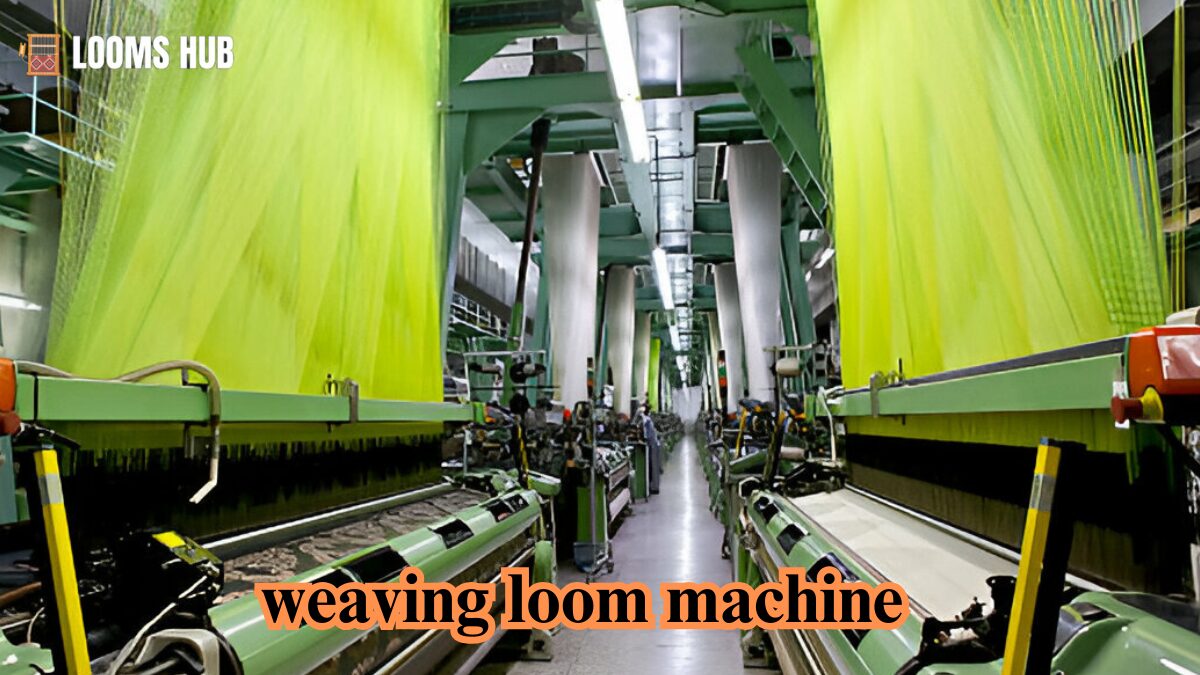Weaving loom machine has been an essential craft for centuries, transforming raw materials into beautiful textiles. At the heart of this art is the weaving loom machine, a tool that revolutionizes how fabric is created. Whether you’re a hobbyist or a professional in textile production, understanding weaving loom machines can elevate your craft. This guide explores everything you need to know, from types of looms to tips for choosing the right one.
What is a Weaving Loom Machine?
A weaving loom machine is a device used to interlace threads, known as warp and weft, to create fabric. Modern loom machines range from simple manual designs to advanced automated systems. Their primary function is to maintain thread tension and ensure precise alignment, resulting in a uniform weave.
Key Components of a Weaving Loom Machine
- Warp Beam: Holds the warp threads, which are stretched tightly during weaving.
- Heddles: Thin wires or cords that guide and separate warp threads.
- Reed: A comb-like structure that pushes the weft threads into place.
- Shuttle: Carries the weft thread across the warp threads.
- Treadles: Pedals or levers used to control heddles in manual looms.
- Take-up Roll: Collects the woven fabric as it is produced.
The History of Weaving Loom Machines
The history of weaving dates back thousands of years, with early looms being basic wooden frames. Over time, advancements such as the invention of the flying shuttle in 1733 and the Jacquard loom in 1801 revolutionized textile production. These innovations paved the way for the complex, automated weaving looms we use today.
Types of Weaving Loom Machines
Weaving looms come in various forms, each tailored for specific applications. Below is a breakdown of popular types:
Handlooms
Handlooms are manually operated and ideal for small-scale projects. They are widely used in traditional textile crafts.
Advantages:
- Low cost
- Easy to operate
- Requires no electricity
Limitations:
- Slower production speed
- Limited fabric width
Power Looms
Power looms are mechanized and suitable for industrial textile production. They use electric motors to automate the weaving process.
Advantages:
- High production capacity
- Consistent quality
- Suitable for large-scale operations
Limitations:
- Expensive initial investment
- Requires regular maintenance
Jacquard Looms
Jacquard looms are specialized machines designed for intricate patterns, such as brocades and damasks.
Features:
- Complex design capabilities
- Operates via punched cards or computerized systems
Rigid Heddle Looms
Rigid heddle looms are compact and versatile, making them popular among hobbyists.
Benefits:
- Lightweight and portable
- Affordable
- Great for beginners
Circular Looms
Circular looms are used for tubular fabrics like sacks and bags. They weave in a continuous spiral.
Uses:
- Plastic packaging
- Medical textiles
Table Looms
Compact and portable, table looms are perfect for smaller projects and limited spaces.
Ideal For:
- Sample weaving
- Educational purposes
How Weaving Loom Machines Work
The basic weaving process involves:
- Warping: Threads are arranged on the warp beam.
- Shedding: Heddles lift specific warp threads to create a gap (shed).
- Picking: The shuttle passes the weft thread through the shed.
- Beating: The reed pushes the weft thread into place.
- Taking Up: Finished fabric is rolled onto the take-up roll.
Advanced Weaving Techniques
Modern weaving machines allow for advanced techniques, such as:
- Dobby Weaving: Creates small, repeating patterns.
- Tapestry Weaving: Focuses on artistic designs.
- Pile Weaving: Produces textured fabrics like velvet.
Table: Comparison of Loom Types
| Type | Mechanism | Applications | Pros | Cons |
| Handloom | Manual | Traditional crafts | Affordable, easy to use | Slow production |
| Power Loom | Electric | Industrial textiles | Fast, high-capacity | High cost, maintenance |
| Jacquard Loom | Mechanized | Patterned fabrics | Complex designs | Expensive |
| Rigid Heddle Loom | Manual | Hobby projects | Portable, beginner-friendly | Limited fabric width |
| Circular Loom | Mechanized | Tubular fabrics | Continuous weaving | Niche applications |
Benefits of Using Weaving Loom Machines
Investing in a weaving loom machine offers numerous advantages:
- Efficiency: Machines streamline the weaving process, saving time.
- Precision: Automated looms produce uniform, high-quality fabrics.
- Versatility: Different looms cater to a variety of textile needs.
- Scalability: Industrial looms enable mass production.
- Creativity: Advanced looms allow for intricate designs and patterns.
Environmental Impact of Looms
Modern weaving looms are becoming more sustainable. Some advancements include:
- Energy-efficient motors
- Use of recyclable materials
- Waste reduction during production
Choosing the Right Weaving Loom Machine
When selecting a weaving loom machine, consider these factors:
- Purpose: Determine if it’s for hobby or commercial use.
- Budget: Factor in the cost of the machine and ongoing maintenance.
- Material Compatibility: Ensure the loom can handle your desired threads.
- Space Availability: Choose a size that fits your workspace.
- Ease of Use: Beginners should prioritize user-friendly designs.
Case Study: Choosing the Right Loom for a Startup
A small textile startup in India opted for power looms due to their efficiency and scalability. By investing in mid-range models, the company balanced cost and productivity, enabling them to compete in the local market. The decision helped them produce 500 meters of fabric daily, meeting market demands efficiently.
Maintenance Tips for Weaving Loom Machines
Proper care ensures longevity and optimal performance:
- Regular Cleaning: Remove dust and lint from moving parts.
- Lubrication: Keep joints and mechanisms well-oiled.
- Inspection: Check for wear and tear on heddles and reeds.
- Tension Adjustment: Maintain proper warp thread tension.
- Professional Servicing: Schedule annual checkups for industrial looms.
Quick Maintenance Checklist
| Task | Frequency |
| Dust removal | Weekly |
| Lubrication | Monthly |
| Inspection | Quarterly |
| Professional service | Annually |
Future Trends in Weaving Loom Machines
As technology advances, weaving looms are becoming smarter and more efficient. Key trends include:
- Automation: Integration of AI for pattern recognition.
- Sustainability: Eco-friendly materials and energy-efficient designs.
- Compact Designs: Portable looms for urban spaces.
- Smart Looms: IoT-enabled looms that track performance and maintenance.
Innovations in Weaving Technology
- 3D Weaving: Produces three-dimensional textiles for applications in aerospace and medicine.
- Digital Jacquard: Allows for real-time pattern adjustments using the software.
Quote:
“Weaving is not just a craft; it’s a legacy. Modern looms honor this tradition while embracing innovation.”
Frequently Asked Questions (FAQs)
What is the best weaving loom machine for beginners?
For beginners, a rigid heddle loom is an excellent choice. It’s affordable, portable, and easy to learn. Many hobbyists start with this loom before transitioning to more advanced models.
How much does a weaving loom machine cost?
The cost varies widely based on the type and features:
- Handlooms: $100-$500
- Rigid heddle looms: $150-$400
- Power looms: $5,000-$50,000
- Jacquard looms: $20,000 and up
Can I weave different materials on one loom?
Yes, but it depends on the loom’s design and strength. Lightweight looms may not handle thick or heavy threads like wool, while industrial looms can accommodate various materials.
How long does it take to weave fabric?
Time depends on the loom type and complexity of the design:
- Handlooms: Several hours to days
- Power looms: A few minutes to hours per meter of fabric
Are weaving looms eco-friendly?
Traditional handlooms are highly eco-friendly as they require no electricity. Modern looms are becoming more sustainable with energy-efficient designs and reduced waste.



